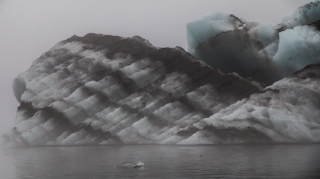The massive Thwaites Ice Shelf in Antarctica, nicknamed the "Doomsday River," prevents warm sea water from reaching other glaciers, protecting them from collapsing.
But Thwaites' collapse will trigger a cascade of glacial melt that contributes to a three-metre rise in sea levels, or 4% of global sea level rise.
Since 2000, Thwaites has lost more than 1,000 billion tons of ice.
The flow of warm, salty seawater into the deep ocean causes glaciers to melt, with warm currents crashing into the sides of the Thwaites River (for example), melting the thick ice that protects the shelf edge from collapse. As ocean temperatures rise due to climate change, these currents will erode Thwaites, pushing it closer to total collapse.
So, geoengineers are devising technologies that can slow the melting of glaciers, including massive "underwater curtains" to prevent warm seawater from reaching the glaciers.
But John Moore, a glaciologist and geoengineering researcher at the University of Lapland, revealed that implementing this ambitious plan would cost about $50 billion.
Moore and his colleagues are trying to find out whether it is possible to install curtains on the bottom of the Amundsen Sea in West Antarctica to slow the melting.
If the curtains have an unexpected impact on the local environment, they can be removed and redesigned, Moore said.
Currently, researchers at the University of Cambridge are testing a 3-foot-tall version of this technology inside tanks. Once its functionality is proven, they will move on to testing it in the River Cam, Moore said.
Moore explained that the idea is to gradually expand the scope of the prototypes until they are installed in Antarctica.
Tags:
antarctica
billion plan
doomsday river
glaciers
science
stop melting
thwaites ice shelf
warm sea water






Brilliant 😍
ReplyDelete